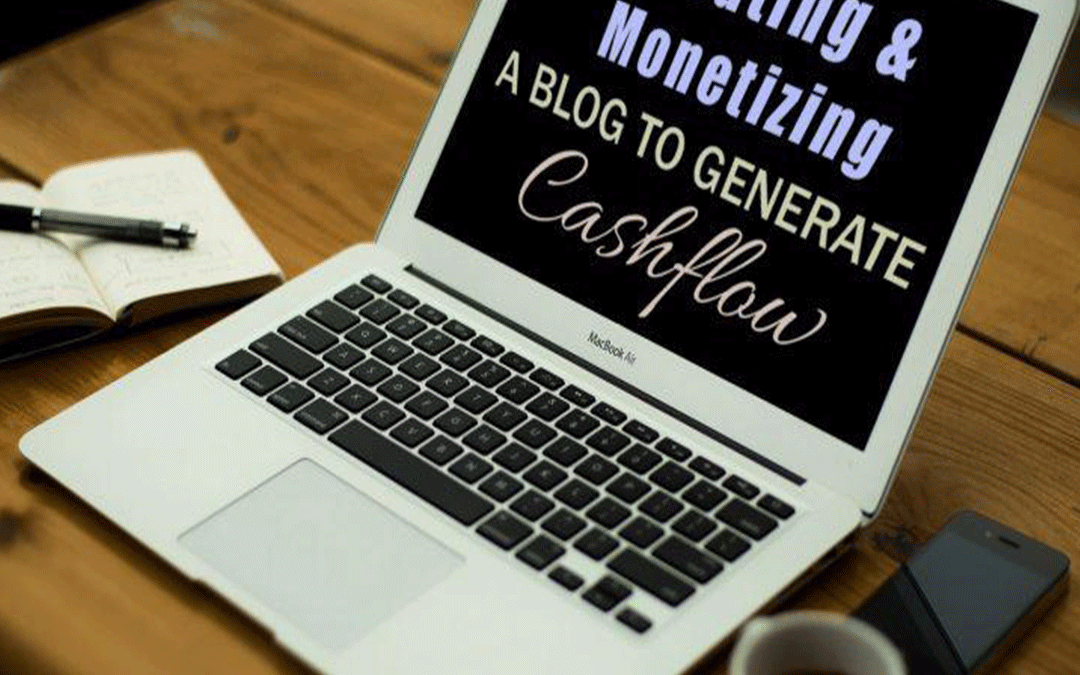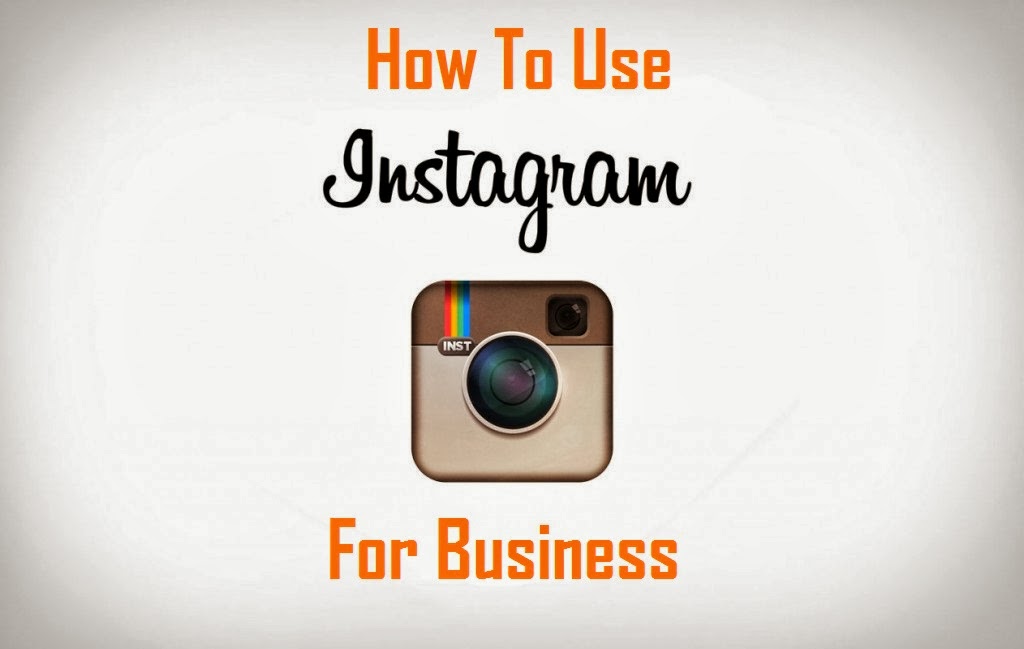
by tracy uhodioha | May 17, 2019 | website traffic & monetization
Part 2-B: How To
Monetize A Website Without Ads
You might find the concept of making money through ads
distasteful or counterproductive. You aren’t alone in that aspect. There are
several drawbacks to ads that detractors readily point out.
- Searching for advertisers eats up time
- Ads don’t always pay that much
- The income stream is unreliable
- Sometimes advertisers will refuse to pay you
- Ads can be creepy and intrusive
- They also slow down site performance
- You’ll have to forfeit some control to please
your sponsors
To make money from your site without giving in to “the man”
you have to build value and an audience. Once you’ve established your value,
you have several methods of turning that into cash.
Start Selling
Something
We touched on this earlier. You might have a product or
merchandise of your own that you can market. A book, T-shirts, or something
else physical in nature.
You might be offering a skill or consulting services. You
could use your site to build yourself up as an authority on a topic. Then you
charge for people to hire you for your expertise. You could even start doing
classes and charge others to learn your unique talents.
As an expert, you can parlay a massive online following into
an offline one. Set up a speaking tour, seminars, or day-long lectures. If your
followers like what you do, they’re likely to attend.
If you’re an entertainer, the website becomes a similar
means for getting people interested in your art. Then you direct them to your
live shows, where you earn money from people that want to see you perform.
Set Up A Paywall
Somewhat related to the earlier concept of “selling
something” is the paywall. In this case, you’ll be selling your content rather
than a physical product.
You can block off segments of your site to “members” who pay
a fee to access it. You could deliver individual portions of content as “drip”
with each content block costing a small fee. You might even try a subscription
service so that users pay a monthly fee to access your content.
Portions of your site can remain free to all, to entice new
visitors. The “premium content,” however, is only available to your “premium
membership.” If your content is that compelling, you can gain a fair number of
members who will gladly pay.
There are
several approaches to setting this up. Quicksprout has an awesome guide that lays it all out
in plain terms. The short of it, though, is making sure that you are providing value to your visitors, and they
feel that the value is enhanced by paying extra.
Value For Value
The third option involves creating incredible content, then
leaving it all free to access.
Politely ask your audience to donate to the cause, reminding
them that their patronage will allow you to continue bringing them what they
love about your site.
You provide value in the form of your content. The audience
reciprocates, offering value in the form of monetary compensation.
You won’t get everybody to donate. You might not even get
half of your audience to donate. If you have a good amount of traffic and
strong content, though, you’ll receive enough support from contributing
visitors to finance your operations quite nicely.
You could set up a donation button on your page to allow
users to contribute directly through options like PayPal. You might even try
setting up a page on a service like Patreon. It allows audiences to browse
content creators and finance the ones they like best.
Part 3: How To
Monetize Your Site By Selling It
You could also try building up your site and selling it to
someone else for a lump sum. Plenty of entrepreneurs are looking for sites with
steady streams of visitors that they can “leverage” for their own ends.
There are also tons of resources for selling a site. In
particular, website brokers who can get your site in front of interested buyers
and handle all the tedious paperwork.
To sell a site right, though, you can’t simply slap
WordPress onto an existing domain, bill it as “having potential,” and then call
it a day. You have to turn it into a worthwhile investment.
This means going back to the two fundamentals that we’ve
harped on this entire guide. Create good content, then build up your site traffic.
Conclusion
Those two building blocks are the foundation from which all
website monetization strategies grow. If you remember nothing else, remember
this: get your site in order first. The money will follow shortly after.
Once your site has great content and lots of visitors, it
doesn’t matter whether you want to sell ads, sell T-shirts, or sell the content
itself. You’ll be able to do it because you have the audience in place to
support your efforts.
You may also do well by employing more than one monetization
strategy at a time. Different audiences will react to different approaches.
A thorough analysis of your audience (along with some
trial-and-error) will reveal what methods will work best for turning your web
presence into a steady source of extra income.
CC: https://startbloggingonline.com/
I trust you have gained from the series? Share your experience by leaving your comments below. Expect a fresh and intriguing topic in my next edition.

by tracy uhodioha | May 10, 2019 | website traffic & monetization
Part 2-A: How To
Monetize A Website With Ads
Now to answer the question, “how to monetize my website?”
The first set of strategies involves using advertising to bring in the dollars.
It’s a straightforward collection of methods that you can find plenty of
examples of all over the net.
Selling Ad Space Directly
One of the oldest methods for generating money. You have the site, you have
the traffic, and you have all that free space to subtly insert ads from
sponsors.
These could take the form of a sidebar banner, small pop-ins, or the
occasional link at the bottom of the page. Pricing for each can vary.
The direct approach is time-consuming, but it allows you to
cut out the middle man and maximize the number of ad dollars you can earn.
You might charge a flat fee for a month of running an ad.
It’s direct, and you’ll know what you’re getting every month. You might be
limiting your potential, however.
The alternative is a pay-per-visitor or pay-per-click model.
Here, you get paid based on the number of people that come to the site and
see/click the ads. You have the chance to strike big with lots of traffic but
could get very little if your number of visitors starts to trail off.
These figures are often measured as something called “CPM,”
the revenue generated from 1,000 impressions. It’s difficult to calculate an
across-the-board average, but for display ads, you should try to shoot for $2-3
for best results.
Next, you’ll have to let advertisers know that you’re
looking to sell space. You’ll need a media kit, a summary of your site designed
to entice potential advertisers.
Within your kit, you’ll need to present upfront information
on your website’s audience. This means the total number of visitors, their
ages, and a gender breakdown.
You’ll want to include detailed info, like their marital
status, number of children, etc. If you have a niche site, then information
showing that your audience fits the niche is also vital.
To obtain this information, you can use online tools
like Quantcast, Alexa, or Similar Web. These tools
analyze who is coming to your site and will provide basic details about who
they are. The drawback is that you don’t have much customization over the
information you get.
For that, you’ll have to ask your users to self-identify
through surveys. You can put these on your site or email them directly to your
visitors. You should try to keep the questions simple and make them fun so that
visitors are more likely to respond.
The problem is that it can take a while to get a
“statistically significant” number of respondents. There’s also no way of
knowing if respondents are answering your questions truthfully.
You may want to experiment with both methods to see which
gets you the best data. When you’ve made a determination, the information you
gain will be a large part of the pitch that you make to potential advertisers.
Now that you can prove that your site has the numbers to
make it a worthwhile, you have to show off your real estate. These are the
spots on your site that are prime for advertisements. They should be prominent
and convey to advertisers that their product or service will get noticed.
When the media kit is complete, you’ll then need to identify
potential sponsors, find the appropriate contact, and send your package off
with a solid proposal explaining why they should pay attention to you.
If you don’t already have direct relationships with
companies, this could be a tricky step. You can get a leg up by checking out
who is advertising with your competitors. You can also make use of resources
like LinkedIn and SellerCrowd to
find out who to contact.
Once you’ve tracked down your targets, be direct, be
upfront, and back up your claims with the data you gained while doing research
on your site.
Selling Ads With
Google AdSense
The process above might seem overly-complicated for some
people. Those that want something less involved can make use of Google
AdSense as an alternative.
This method allows brands to make use of Google to display
ads on “publisher sites” like yours. You get a code from Google, then place it
on your site in the location you want ads to go.
Google handles the rest. They find relevant ads. They run an
auction so that the highest paying ones get to your site. They’ll even take
care of the “money stuff” behind the scenes. You get paid whenever someone
clicks on an ad.
It’s a straightforward procedure, but you have to give
Google a piece of the action. If you’re willing to take that trade, though, you
stand to make hundreds or even thousands of extra dollars a month with a large
enough audience.
Just make sure you review the Terms
Of Service carefully. They’re sticklers about what they allow, so
you’ll have to stay on your best behaviour to remain in their good graces.
Affiliate Marketing,
Paid Posts, And Native Advertising
If neither of those options grabs you, you can try affiliate
marketing, paid posts, or native advertising to generate cash flow.
When you become an affiliate, you find products and services
that you enjoy. You promote these products/services on your website or blog,
slipping an “affiliate link” into posts where you talk about them. When
visitors click the affiliate link and make a purchase, you get a kickback.
Popular affiliate marketing programs include ClickBank, Commission Junction, Share-A-Sale,
and Amazon.
Paid posts and “native advertising” usually take the form of
“sponsored content” that an advertiser has paid you to feature on your site.
Often, these will be akin advertorials plugging their products or services.
Done properly, this method can supplement your normal
content with a little “extra” that falls in line with what you’re already
doing. For example, a positive review of a product that you already that was
worth getting.
Done poorly, native ads can come across as cheap, insulting,
and tarnish the reputation that you worked hard to obtain. This could range
from content written in whole by the advertiser that you allow on the site
unchallenged, to blatant “shill posts” promoting something that is widely
panned by your audience.
By law, you’ll have to disclose which posts are
bought-and-paid-for. If you’re upfront with your audience, they may see it as a
way to enhance the site (rather than you selling out for cash).
If you’re looking to get started with the native ad method,
you can try the direct route. This would involve reaching out to your contacts
at advertisers you already know.
You might also try checking out specialists on the matter
like Nativo and Sharethrough. They
have “native ad boards” that can put interested publisher sites in touch with
potential advertisers.
CC: https://startbloggingonline.com/
I trust you are gaining from the series? Share your experience
by leaving your comments below. Expect more tips in my next edition.

by tracy uhodioha | May 3, 2019 | website traffic & monetization
Part 1: Building
Content & Generating Traffic
As we mentioned, these elements are the foundation of
properly monetized sites.
Your content will vary based on your specific business
interests. No matter what the enterprise, though, no one will care if the meat
of your site is boring.
There’s no shortage of guides on creating great
content. Some for blogs, some
for video, others for podcasts and
the like. In all of these mediums, the core component is caring about what
you’re doing.
Passion, you will find, is the top motivator for creating
content that captivates. Without it, you will experience setbacks and quit.
With it, you will falter, learn, then grow.
Make sure that your content is of a high standard of
quality. Make sure that the subject matter is something that will interest
viewers/readers/listeners. Make sure that visitors can easily digest and share
the content, and hold yourself to a regular schedule for releasing it.
Once you’ve built a solid foundation, you will need to lead
people to it. You will need to employ careful analysis, marketing, and
networking.
For example, using word of mouth to extend your reach.
People come to your site, see the great content, then tell their friends to
visit as well. You speed this process along by giving out free content that is
easy to share. A newsletter, free e-book, tip-of-the-day, etc.
You might try getting your site mentioned by other sites in
your wheelhouse. Do some guest posts. Trade with another site for links.
Establish an expert presence on newsgroups and forums so that people will want
to check you out.
You’ll also want to take advantage of the “tried-and-true”
methods of traffic generation. These include:
Email Marketing — Reaching out to potential visitors directly through email. It
isn’t as fashionable as some other methods, but it works. A successful email
campaign should be simple, engaging, and include a strong call-to-action.
Social Media Marketing — Email marketing’s sexier cousin. By building a following on
popular social sites like Facebook, Twitter, and Instagram, you create an
audience that you can then get to visit your main site. Social is highly valued
because it allows users to share popular content quickly.
Search Engine Optimization — The proverbial “pink elephant.” A concept so all-encompassing
that every website takes heed. This is the practice of tailoring your site and
content so that it will produce a higher ranking in search engine results.
There’s no one way to approach it, but finding
what works for your site will go a long way in earning you traffic.
A word to the wise: No one strategy will
secure you steady traffic. The takeaway here should be that you need a base of
great content and a combination of strategies to get visitors to your site.
It may take some trial and error, but with
perseverance, you can build a consistent user base that you can then use to aid
your monetization efforts.
CC: https://startbloggingonline.com/
I suppose gradually you
are sapping out inspiring ideas from this topic? Kindly share your thought in
the comments below! Expect more tips in my next edition!

by tracy uhodioha | Apr 26, 2019 | website traffic & monetization
If you’re like most, you fall into one of two categories. Either you
started your website for fun and are now looking for a way to turn it into an
income generator, or you started it with a business goal in mind but need a way
to maximize your revenue.
Either way, you’ll be looking for strategies on how to monetize your website. This guide will go through some of the most popular methods and help you find out which will apply best to your situation.
The Basics/Monetization FAQ
Why would you monetize a site? “For the
money” is the obvious answer. It’s simple but overlooks the reasons someone
would want this kind of income stream. Many view the monetized website as a
method for escaping the rat race. They long for an opportunity to work from
home, be their own boss, create their own schedule.
A website that brings in money could provide a crucial first step, or be
the entirety of the solution if it is successful enough. Others are serial
entrepreneurs. To these individuals, there is little other reason for having a
site than turning it into a successful business.
They might be acquiring a site that they will “flip” into a
money-making venture. They may be building it from the ground up to bring in
the cash. Either way, they see business as the primary goal and the website as
a tool for achieving that aim.
Can you monetize any
website? The short answer is “yes.” It’s important to
remember that the site isn’t what makes money. The website is a tool to promote
your business model. Your business idea is what will attract people and earn
your money.
Can you monetize
websites without ads? It is possible, but it takes
some dedication. There will be an even greater focus on creating loyal
visitors, as they will become your primary supporters. Some school of thought
even see ads as detrimental to a monetization mindset, especially if the focus
of the site is blogging.
Can you make money by
selling sites? Yes, There’s a whole website trade, complete with
brokers, centred around this concept. If you have lots of ideas for businesses,
this method may be ideal for you. We’ll touch on how to use the website trade
to generate income in this guide.
How does site traffic
play a role? No matter how you want to monetize your site,
you’re going to need traffic. With no visitors to “convert,” your business
model, whatever it is, will be stuck in the water.
We’ll go into some specific strategies for generating traffic.
Generally speaking, though, it involves engaging your audience and adding a
personal touch to the site (along with a generous helping of self-promotion).
What about web
content? Content is essential. You’ll also need to make sure
any content you have on the site is good enough to keep visitors coming back.
Learning strategies for trimming the fat, keeping your ideas straightforward,
and connecting with visitors is a must.
CC: https://startbloggingonline.com/
This is an introductory phase and a tip of the iceberg to awaken and
prepare your mind. Get set for more tips in my next edition.

by tracy uhodioha | Apr 19, 2019 | Social Media Management
So today I bring to all “REAL ESTATE DEVELOPER” Social Media
guide for the growth of their business. In this post I will be walking you
through a few ideas you can use to elevate your real estate social media
marketing efforts. Let’s Go.
Schedule Your Content: Cultivating
the attitude of scheduling your post save you more time and gives you the
opportunity to get other things done. Your time is valuable, do not waste it. NB – Every spare time you spend creating social
media posts could be better used in meeting potential buyers and sellers. The
idea is scheduling your content in advance. Choose a day that you feel is
convenient to create and schedule your content for at least two weeks, by doing
this, you would have saved yourself the stress of posting every 45mins per day
and also stay focused on other of your activity.
Post Relevant Content: Give
your readers useful contents, not sales materials. Give them engrossing reasons
to return to your site. Always write about what they find interesting, provide
insights into the local market and share news about the neighbourhood you serve
in the form of ebooks, graphics and guides. Trust me, people love following
experts that help them.
Use HashTags: Always use
hashtags and use them wisely. Hashtags can be great when they’re used to organize
relevant and helpful information. Ensure to always use trending hashtags
thereby exploring the various hashtags in real estate social media. By doing
this, you sure will get your post to be seen by more audience and possibly get
new followers.
Engage Your Audience: It’s
important to get your audience engaged. Should you observe you aren’t seeing
much engagement or your posts ain’t getting responses, give asking questions a
shot which will serve as a call-to-action. You can open the floor, but ensure
to provide in-depth answers that are more than adequate. Sharing what you know
and teaching others wouldn’t be a bad idea! I will also advise you to provide a
chance for a multi-sided conversation to emerge.
Build Up Trust: Building
trust with your clients is key in business. If you publish infographics, write
articles, share blog posts, and offer free information to help your clients,
they’ll definitely begin to trust your expertise. Offering free advice without pushing your
services is an easy way of building trust. Ines Hegedus-Garcia @ines works in
Miami and often posts about local events, real estate advice and other
information where clients would take an interest.
I trust this guide to be of great help to your business.
Which of these guidelines will you want to first try? Let us know in the
comments

by tracy uhodioha | Apr 12, 2019 | Blogging
Losing your blog content can destroy a business reputation or the
online presence you have been trying to build; Ponder on This! You’ve got a
blog which had hundreds of posts, comments and even affiliate links only to get
to your notice that it has been destroyed a while later! Not a good vibe
neither a nice feeling. The fact that your blog is small doesn’t mean you’re
immune from being hacked. Trust me! Hackers can sometimes prefer to place their
target on smaller websites because those tend to have less protection. Hello!
Who Says You Can’t Be Protected? Here are a few informative tips to help in
securing your blog or website content. I hope it helps you!
Back Up
This is the first and most paramount step. Before making any changes, ensure to backup your entire ‘Data Base’ (DB). This can be done manually or with the use of an available plugin. I strongly recommend backup buddy which enables the backing up of your entire WordPress blog and lets you easily restore it at a later point in time. Always have this in mind!
Use Brawny Passwords
Hackers are used to the default WordPress login which is “admin.” Changing this to something else that would be difficult to think of is the wise thing to do. You shouldn’t make yourself vulnerable to your attackers – a hacker tries to guess the password by going through lots of passwords user combinations.
In securing your password, you should give this following a
shot:
Use brawny passwords which include upper/lower case
characters
Use unique characters such as !#@…
Ensure not to use a password such as your birth date which
has proven to be insecure since hackers can find personal information easily.
Do not forget to have lots of different passwords. If you have only one
password, accessing everything through it will be easy by someone who gets to
know this password. This is the more reason you need to use lots of different
passwords.
Get Unwanted Plugins Out
Are you aware that themes and plugins are often used as entry points
for hackers with harmful intentions?
It is wise to review what you have installed regularly and delete any you no longer use. This process reduces the rate of potential entry points into your blog.
NB – Excess plugins can make your job difficult and more complicated
than it needs to be. It also can slow down your website’s loading speed by
adding extra HTTP requests. If your website loads slowly, the tendency of being
haunted is high which may lead to losing customer trust and also cause a decrease
in sales.
No Directory Browsing
Prohibiting people from browsing your websites directory structure is very vital. I’ll give you an assignment just for you to know this is real. Enter “index of” into Google and Google will list all the websites that allow the browsing of directories. In order words, it is not a good idea to allow your visitors to browse through your entire directory. NB – This act is easy to find out about directory structures and this makes it easier for hackers to lookout for security holes.
In order to bring this behaviour to an end all you need do is add the
line of code from below to your .htaccess file in the root directory of WordPress.
Options All -Indexes
This will stop the behaviour all at once.
Inactive
Users Should Be Deleted
Inactive user accounts are not relevant and also can be a security risk to your site. Some persons are not informed when it comes to choosing strong passwords. They end up having weak passwords when they sign up for your blog. If the account is inactive but still on your blog, hackers could use this account to gain access to your blog.
That’s why it is of the essence to delete inactive user accounts in WordPress and also ensure this process doesn’t break anything. To actualize this aim, go to your WordPress dashboard and click on Users. This takes you to the page where you see the list of every user. Then go ahead and delete the ones you are sure are inactive.
I trust these tips to be of great help to you and by applying them, I am
sure the chances of being hacked will be less.
How secure is your WordPress blog? Kindly share in the comments below if you have a tip.

by tracy uhodioha | Apr 5, 2019 | Social Media Management
Instagram is a free, online photo-sharing application and social
network platform that was acquired by Facebook in 2012. Instagram allows users
to edit and upload photos and short videos through a mobile app. Users can
add a caption to each of their posts and use hashtags and location-based
geotags to index these posts and make them searchable by other users within the
app. Each post by a user appears on their followers’ Instagram feeds and
can also be viewed by the public when tagged using hashtags or geotags. Users
also have the option of making their profile private so that only their
followers can view their posts.
Instagram can possibly be mysterious for business owners. If
you are not a celebrity, the tendency of not been known on Instagram is high. As
true as this can be, I’m very sure you’re not looking to get popular; rather
you want to build a solid presence on the platform in order to engage and
connect with your target market. This article will walk you through how to use
Instagram to do just that. #FollowMe!
HASHTAGS
Aside from your image, your hashtags are the most paramount
element of your post. Whilst captions help you tell the story behind your
image, your hashtags allow you to get your image(and caption) seen by those
outside your current domain of followers. It also helps when users search for
relevant industry-related hashtags and your post shows up as one of those…
NB: Use popular
hashtags that have the best chance of getting searched for(e.g., #wcw #tbt
#tgif #love etc). Use hashtags that can attract new followers. For instance, #followme,
#follow4follow, and #follow.
Ensure to use at least one hashtag on each post. Research
has it that, engagement is highest on posts that have 11+ hashtags.
YOUR IMAGE SHOULD BE IN LINE WITH
YOUR BRAND’S VIBE
Why most brands are successful is because they pay careful
attention to how their images represent and contribute to their brand’s
identity. They seem to have an umbrella
theme to their images for which the theme is closely related to their all-inclusive
company image.
Take Starbucks, for instance, whose company mission
statement is as follows: “[T]o inspire and nurture the human spirit – one
person, one cup and one neighbourhood at a time.” Their Instagram posts support
this statement attractively, offering up inspirational and heart-warming images
and videos. They use their images to further their mission and story. NB; Check out their Instagram page on
the above link and learn from them.
HONE
YOUR PROFILE
It takes not much time to properly hone or optimize your
Instagram profile, and this can have an outstanding impact on how many people
click through to your site talk more of how they see your brand.
NB: See that your
images and description get along well with your brand’s vibe.
Make sure to add a link referring your visitors back to your
website.
Always use your company logo somewhere in your profile to
enable your users to know it’s the official profile for your company.
Should you have a local business, ensure to add your
physical location.
The consistency of your images and other content with your
other social media properties is key.
Add one brand specific hashtag to you’re your profile so
users know it ‘belongs’ to you.
Use your bio to clearly communicate what your brand is
about, and to also attract users to click through to your site.
INSTAGRAM Ads
Instagram gives room for all business to advertise on the
platform. Have it in mind that you need a Facebook account to create an Instagram
ad; ads can only be created in Facebook ad
creation or Power
Editor.
Instagram ads give your business the opportunity of its
organic posts to reach as many people as possible for which may possibly
attract new followers, leads that may convert into paying customers. This may
be worth trying for your business!
GROW
YOUR FOLLOWERS
The secret to increasing your followers is really simple:
lasting engagement naturally leads to followers. This is to say, consistency in
posting engaging, compelling and relevant images, makes you grow your followers
organically.
NB: Did You Know?
Quality beats quantity! Polish your account to leave only the best images.
Trust me, no one wants to follow someone or a brand with thousands of pointless
contents.
Ensure to add a relevant and compelling caption. Doing a
call to action within your caption is a great way to increase engagement. e.g.,
Ask questions in all your posts so as to keep your visitors engaged.
Consistency is Key! So be consistent. Know who you’re
posting for(your audience) and why you are posting (purpose).
Engage in your own photos and on other people’s. As people
see that you’re regularly interacting, they’ll be more likely to follow you.
Promote your Instagram account everywhere: to your email
subscribers, on your physical marketing materials and to your other social
media fans and followers.
POST ENGAGING CONTENT
It is very important that you engage your audience with
compelling content that leaves them with no option other than to hunger for your
post. Make hanging up your strategy and monitoring which formats get the most
engagement. take for instance some popular post ideas:
User-submitted photos/User-generated content(UGC)
Sneak peek of new products
Simple image quotes created using a tool like Canva
Short product demos or tutorials
Holiday-themed images and videos
It’s paramount to consider which strategies are most likely
to get your photos liked and commented on even as you decide on what to post.
Here are a few numbers of strategies that can help you get
to the highest levels of engagement:
Human faces (do not operate like a robot)
Track the real customers using your products
Light colours are always preferable to dark colours in terms
of getting likes and as well comments
Did You Know? Photos tend to perform more than videos! It’s
also not a yardstick for you not to post videos
High-quality image background space get you more engagement
FOLLOWER OTHER PEOPLE
Should you are not a well-known brand, there’s no way can
get away with following other people back. Not only should you follow your followers
back, rather be on the lookout for new users to follow. Few strategies you can
use to find worthy followers are as follows:
Search for companies or people you know using Instagram’s
search bar
Do a Google search for influential users in your industry
(e.g., “social media” + Instagram).
Follow influencers in your industry. A tool like Keyhole will allow you
to search users and posts by hashtag, and sort the results based on the number
of likes they have received
Follow users who are following influencers in your industry.
Use a tool like gramfeed to
easily search Instagram for people, places and photos.
Search for industry-related hashtags. This is perhaps the
most effective strategy for finding targeted users to follow in your niche.
Conclusively, I suppose these strategies above have been
able to motivate you to start making use of Instagram as a part of your marketing
strategy, or to increase your present investment in the platform.
Kindly leave your best tips in the comments below!

by tracy uhodioha | Mar 29, 2019 | Social Media Management
It is key for your business to reach a broader audience and by so
doing, you will attract a new kind of buyer which makes you more resilient and
profitable. In this post, I will give you a few strategies to diversify your
audience and expand your reach. Let’s Go!
Assess Your Business
Ensure to take a candid look at your operations, marketing tactics,
website, etc. Find out should there be any wrong attitude you are displaying
that has been pushing away your customers from your business. NB – “YOUR ATTITUDE DETERMINES YOUR
ALTITUDE.”
Conducting a thorough analysis and review of your entire business as a
whole has proven to be paramount. The possibility of turning off millennials
should you don’t have a website or social media presence is high. This is the
more reason for assessing or evaluating your business is relevant.
Reanalyze Your Products
Starting an entirely new product or simply modifying your present core
product is one great way to attract a new demographic. For instance, over the
years the NFL has been trying to attract
more women and finally found success largely via mechanizing, as well as
offering every necessity. The right approach to expanding your products or
services is to develop apps and use gamification tactics which typically has
proven to be an online marketing technique to encourage engagement with a
product or service.
Networking
Ensure your focal point to be on networking. According to Ronald Burt, he said, “Instead Of Better Glasses, Your Network
Gives You Better Eyes.” Did You Know? Personal connections are a great way
to increase your audience. The tendency of someone to forget an email is highly
possible, but it is much harder for someone to forget you, especially if you
make the right impression. “Most of
my business comes through referrals. Each successful client is a link to
another potentially successful client,” says Sharon Kraun. This is
exactly what you get when you network rightly. So take every opportunity you
have to talk about your business because people can’t support what they don’t
know about.
Accept Your Competition
Fighting your competitors has and can never be the right approach to
succeeding in business rather working together can often be much more
efficient. In business, you face a lot of setbacks, and you have to keep
pushing yourself to grow.
When you recognize your competitors are better than you, don’t settle
for being envious or angry. Use their superiority as a goad to improve your own
operations and strategy. Learn from what they do better and find ways to match
or surpass it.
Public Relations
Ramping up your public relation is one strategy to be productive in business. In public relations, your only expenses are generally phone calls and mailings to social media. So publicity is more effective than advertising. Publicity has greater longevity than advertising. NB – “An article about your business will be remembered far longer than an ad.”
I suppose you have gained from today’s tips? Now, it’s your turn. Kindly
let us know your thoughts in the comments!

by tracy uhodioha | Mar 22, 2019 | Social Media Management
Instagram is one of the biggest and busiest social media
platforms. Research has it as of 2018 that it boasts more than a billion
monthly active users, half of which are active on a daily basis!
Yet it’s not just the colossal audience that makes it an
ideal marketing platform. Rather it’s a highly-targeted and visual marketing platform
that is great for building a loyal audience.
Forging ahead, let’s consider a few tips that can succour you
increase your organic engagement on Instagram.
- Be
Strategic With Your Hashtags
The power of hashtags on a platform like Instagram
cannot be downplayed. The right, important and relevant hashtags can help you
grow and reach the right people on the platform.
Generally, everyone wants their hashtags to
be relevant to their brand, their products, their posts and also the message
they are trying to convey.
The question is, how do you find the right
hashtags to use? Here’s how you tackle such: I strongly recommend the use of
Websta to find the right hashtags.
What better way to boost Instagram engagement
than post compelling content that allures users to engage?
It’s not just about the image and engrossing
captions that count but also the kind of content.
Your contents should be able to address the
needs, wants, frustrations, aspirations or fears of your audience. For instance,
a fitness business, you could share before-after photos of your clients who’ve benefitted
from your services.
That’s precisely what fitness expert Kayla
Itsines does to recommend her Bikini Body Program. Frequently, she shares the
success stories of her clients on her Instagram page. @Kayla_itsines
- Be More
Active On Instagram Stories
Research has it that Instagram users spend more
than 24minutes on Instagram stories on a daily basis which can attest to the
fact that it has gain popularity of around 300 million people using it daily. This
has proven to be a better way to engage your audience, share behind-the-scenes
images and bloopers videos with them. You really need to give it a shot!
- Be Time
Conscious When Posting
posting at the right time is key to
increasing Instagram engagement for your business page.
Ensure to maximize your engagements by
posting content when most of your followers are likely to be browsing their
feeds.
Using the Instagram native analytical tool
to get a picture on when your audience is most likely online is very vital.
This act will help when you make a post, you will gain more engagements within
minutes of posting which count more than engagements gained ages later.
Furthermore, I recommend the use of Sprout
Socials’s social media publisher to schedule post beforehand.
- Add CTAs
To All Your Instagram Posts
The act of simply
requesting your audience to comment and inviting them to engage will prove very
advantageous. This is the reason its paramount to include a call-to-action in
your post captions.
This medium
encourages your followers to engage with your content through comments and
spend more time on your post. It can also be seen as an effective means to boost
your Instagram engagement. You could also opt for a much easier approach like
asking users a question.
Kindly take a look
at this page @bestvacations and how they leverage CTAs to inspire users to get engaged
with their posts.
Engagement is the secret to marketing success on Instagram. Ensure to
experiment to find the strategies that best increase Instagram engagement for
your brand. I trust these tips to help in achieving that.
It’s your turn now. What is the foremost stratagem to boost Instagram
engagement rates? Let us know in the comments!

by tracy uhodioha | Mar 15, 2019 | Content Marketing
- Segment Your Audience To Truly Know And Reach Them
In order to know what type of
content you should produce to drive traffic, it’s helpful to learn about your
current and potential audiences. Audience segmentation provides a way to
understand various customer personas and characteristics — who they are, how
they’re different and how best to reach them. Segmenting your current audience
will also better equip you to find and reach out to new target audiences.
Analyzing demographics is a
great place to start. Group your audience members by age, gender, geographical
location, income, family size and other factors. You’ll need to dig deeper, of
course, with insights and data that indicate behaviours and preferences. These
indicators can help you create data-driven personas, which will then help you
create and serve up relevant content.
A diversified approach to
content distribution is the best approach, from my experience. According to a
study by the Content Marketing Institute,
on average, business-to-business (B2B) marketers use 13 different content
marketing tactics. If you are only creating one kind of content (like a weekly
blog) and only promoting it through one channel (say, Facebook), you’re
severely diminishing the potential impact of your content.
Utilizing the right channels
will help your diversified content generate targeted, qualified leads. Facebook
is the most well-known social media channel, and YouTube is great for
video-driven content like tutorials, reviews and inspirational shorts. In my
experience, LinkedIn and Twitter are more appropriate channels for B2B
interactions, and newer platforms, such as Instagram and Snapchat, can be great
for reaching millennials. Understanding what social media platforms best fit
your particular needs will help you reach a wider audience with your content.
Consistent content engages
customers. Being consistent with your content doesn’t just mean you’re
publishing regularly — it means you are also maintaining a consistent voice,
tone and quality.
A style sheet can be helpful in
curating a consistent voice and tone, and a content calendar can be a big help
with planning consistent distribution. These items can hold your team
accountable to a clearly defined schedule, prompt the sharing of content ideas,
notate special events (that may require a content boost) and fine-tune
distribution. Having a consistent content plan will likely give you a leg up on
your competition.
Incorporating accurate SEO into
your content marketing strategy can do wonders for organic site traffic. SEO
can help your website rank higher in search, and highly ranked pages
consistently have higher click-through rates (CTR). A good SEO strategy —
complete with long-tail keywords, effective meta-descriptions, quality images
and descriptive URLs — can help increase CTR and website traffic.
You’ll never know if you’re
driving traffic if you don’t measure the performance of your content. Split A/B
testing is a particularly useful tool for finding out what kinds of content
drive the most traffic. And, as an added benefit, A/B testing also helps you
understand your target audience more deeply, which will only serve to help you
create more effective content.
What do you want to test? Almost
anything on your website or in your shared content that can affect user behaviour
can be tested, but you’ll want to focus on the elements most important to
driving traffic. These elements include your headline, call to action,
content length, images, site speed, landing pages and so on. Once you’ve
determined what kinds of content work best for your purposes (namely,
driving traffic) your work becomes that much more effective and your overall content
marketing strategy clearer.
At the end of the day, it’s
critical to provide a clear path to how content will help foster the overall
strategy and what will be tracked to ensure success. Doing so will help
streamline both content production and marketing efforts.
CC: www.forbes.com
I trust these hacks to help harness your content marketing ability… Should you have any other hack, kindly share in the comments!











Recent Comments